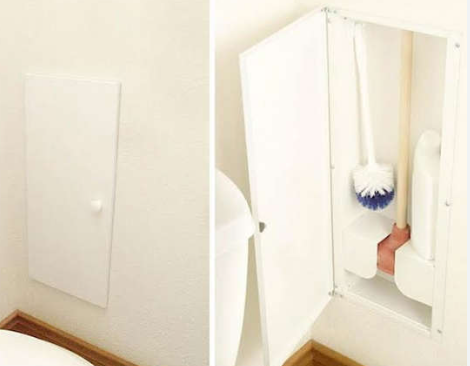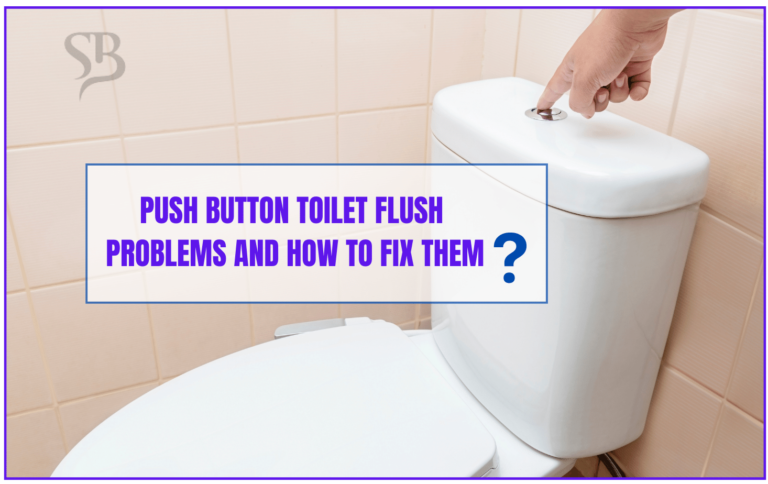Is your toilet water rising when flushed? Sometimes the water in the toilet bowl will rise abnormally or even seem to overflow from your toilet bowl after you flush. This common problem usually happens due to various reasons that are easy to fix.
So, don’t fret! The problem may be a faulty flapper that causes the water to flow too freely from the tank or a clog at the P-trap that prevents wastewater from passing through. This guide provides step-by-step instructions and hacks to help you identify and fix this common plumbing problem. Read on!
Reasons Your Toilet Water Rises When Flushed
Here are a few reasons your toilet water is rising abnormally when flushed:
1. Problem with the Flush Valve
A flapper is a plug that helps hold and release water whenever you flush your toilet. Its primary function is to prevent water from flowing to the toilet bowl if it is not flushed. When it wears out, or its chain becomes short, water may leak, increasing the level in your toilet bowl.
The best option to fix a damaged flapper is to lengthen it or replace it with a new one. However, avoid overdoing it if you choose to lengthen it or your toilet won’t flush efficiently. Removing and replacing old and damaged toilet flapper is easy and inexpensive.
Tip: Avoid toilet cleaning tablets as they make your toilet flappers wear out faster.
2. P-Trap Obstruction
Toilets should not be blocked for too long unless you aren’t in a hurry to use them. If everything is working fine, you can check whether the trap is running. Inspect the toilet vent once you ensure there are no clogs.
P-trap obstruction is also a common cause of water rising in your toilet bowl. P-traps are those bends or humps just below the bowl or sink where water is allowed to flow down the drain pipe.
It’s u-shaped and holds water that will prevent sewer gases from escaping back into your home. When there’s clogging in the toilet’s P-trap, water from the toilet can’t drain to the drainpipe, so it can rise to the rim of your toilet and overfill the bowl.
How to Fix the Issue
You can fix the issue by looking at where the clog is positioned. Sometimes obstructions in the P-trap are difficult to spot and cause trouble. If it’s a partial clog, the obstruction object in your p-trap might be near and easy to remove. Try using your hands and pulling the clog out of the drain, but always remember to wear rubber gloves.
You should be able to comfortably reach down into the drain with long gloves covering your wrists. Go into the pipe and try to feel any obstructions that are in there.
If you feel anything, pull it out, and you will see the water returning to the normal level. That indicates the problem is solved. But if you find nothing, the obstruction object is deeper in the drain. So try using a toilet plunger.
Use a Plunger
A plunger is meant to exert adequate pressure to break the clog. Thus, for extremely good results, use a plunger, also known as the flange plunger, to remove the obstruction in your toilet’s P-trap.
It’s bell-like and seals better with curved openings in the toilet bowl. Use just water to fill the bell-shaped end of your plunger to get a seal on the opening.
Put the toilet plunger over the hole and turn it in the right direction so the waste can flow freely. It’s important to tilt the plunger at an angle to improve the suction as you plunge into the toilet bowl.
Plunge into the toilet bowl and push the plunger into the drain. Pump aggressively in and out of the water trap to cause it to stay sealed. Depending on how hard it is, you can use a strong force to pull or push the waste. If the force is strong enough, it will clear the clog.
Plunge several times to see if the clog has been removed. Repeat the procedure a second time and see if it helps. If nothing happens, try using a toilet snake or an auger to deal with the issue aggressively.

Use an Auger
The auger in a closet has a long tube (like a J-shape) and a long cable (like a snake). A cable feeds down the drain to the place where the clog is. Then, you can push or pull to open the drain. After you remove the cable, you can try pushing or pulling the lever to fix the problem.
To use an auger effectively, use the end attached to the toilet to feed the toilet to the lowest point on the drainpipe. Once the cable stops moving, it means there’s a clog. You can push or pull the cable to remove the clog.
Feel for tension in the cable to decide to remove the blockage or push it farther down the drainpipe. Crank up the pressure in the cable by cranking it clockwise to try to break the waste up. Check periodically whether the tension is releasing or not.
Pull the extension cable back, and do the same thing at least three to five times. If the water drains slowly, crank the engine until you finish cleaning. Finally, flush your toilet to clear the clog.
3. You Have a Blocked Vent
Also, if something is blocking the vent, water can easily rise in the toilet when you flush it. The vent for the toilet may be blocked by branches or leaves that fall inside, causing water to go up the drain.
Check that the vent pipe at the toilet is not blocked. If it is, then use the steps in the section below to unblock it.
- Find the opening in the roof which leads to the toilet. If there is a covering over the opening, you will need to remove that. You will probably have to use a screwdriver to remove the cover or grid to allow access.
- Sweep out any tangled items that have fallen into the opening. You do not want any dirt or solids obstructing the path in the vent.
- Start to clean the vent by filling the pipe with water using a garden hose or spray bottle. That will clear most of the debris. If it doesn’t, check the water level in the vent. If it’s still high, the vent may have a deeper clog. If the water level in the vents in your toilet is higher than normal, there is probably more water in the vents.
- Feed cradles or augers into the vent openings and turn them up with an electric drill. Push the auger up until you hit a snag. This will cause your auger to be pushed further down the vent. You probably have something blocking the vent.
- Attempt to push the auger a little deeper into the vent. Water will begin to drain out of the vents.
- Spray some water down the drains to see if it is leaking. If it isn’t, the vent is cleared.
- Please clean up the areas around the vent to ensure that no more branches, leaves, or other debris falls back into it.
- Cover the vent with a nice decorative mesh or grid.
FAQs
Why is Your toilet water rising and falling immediately after flushing it?
First, there may be a moment of rising water after you flush your toilet if there is a difference in pressure between what enters your bowl and the water that leaves the P-trap.
The difference in atmospheric pressure will cause the rise and fall of water in your bowl once you have flushed it. In that case, don’t fret! It’s something normal, and that’s how the toilet operates.
Can excess water in toilet bowls cause problems?
When there is too much water in your toilet bowl, the toilet will be unusable. And the waste water will start backing up into the other outlets in your house, like your bathroom sink
, tub, or shower; if you catch the problem early and fix it, you will save a lot of time in the long run.
Wrapping Up
Your toilet automatically fills up to a pre-determined level of water according to the design of the particular toilet model. When you flush your toilet, water is pumped to fill the bowl and flow into the drains connected from your bowl to the main sewer line.
Thus the water line in your bowl should remain normal. However, something must be wrong if you notice a sudden rise of water in the toilet bowl after you flush your toilet. We hope this article has helped you determine the primary cause and solve the problem.







